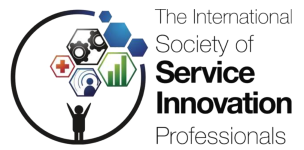Authors: Utpal Mangla and Atul Gupta
The key business capabilities focused on 5G adoption for Industry 4.0 include automation, robotization, smartphones, artificial intelligence (AI), and the Internet of Things (IoT). The 5G equipment manufacturers have developed devices mainly smartphones, IoT, and networks with ultra-low latency (< 5ms), 99.999% availability, 100x (compared to 4G) number of connected devices per unit area, up to 10Gbps data rate. Future communications will expand beyond smartphones into sensors, drones, VR, AR, Telesurgery which will significantly improve process of delivering services and the quality of services in sectors, such as healthcare, finance, and education.
Information and Communication Technologies (ICT) including mobile sector will be influenced and enable the United Nations (UN) Sustainable Development Goals (SDGs) framework aligning itself for economic, environmental, and societal impact. For example, the carbon footprint estimation model in 5G-Network functions virtualization assesses environmental sustainability and energy consumption (Bolla et al., 2020).
Service innovation based on 5G communications has significant implications for ethics and data privacy in domains, such as global connectivity, trustworthy AI, Privacy by Design, Data loss, Data misuse and security. It also has concerns for trans-boundary dataflow, high traffic density including citizen awareness of 5G and high-speed use and sharing of personal data. Service-based vulnerabilities are on the rise which need guardrails, tools, and technologies to evolve even at a faster rate to build citizen confidence and trust in using these devices and services.
Some evolving 5G use cases in the ADN (Autonomous Driving Networks) will continue to enhance L4/L5 advanced intelligence in autonomous vehicle landscape with trustworthy AI decision engines and algorithms needing 5G infrastructure to deliver business value in these emerging areas. Security is paramount for these 5G use cases which comprises of component, data, and federated trustworthiness, along with equipment and connectivity security. 5G helps these emerging areas with ultra-zero latency and very fast data transfer rate.
In the near future, 6G will be out of lab with its own standards, and the specifications required for industry adoption will become available, too. 6G with Industry 5.0 will evolve from economic value to societal value propositions. Industry 5.0 has three key pillars: human-centeredness, resilience, and sustainability (European Commission, 2021). In the context in which 6G and UN SDGs are intertwined, service innovation is required to take cybersecurity and privacy constraints into consideration. The 6G adoption will be seamless on land, air, and sea to drive business capabilities in healthcare, education, finance, space, manufacturing, and other critical industries, to name a few. The emergence of Industry 5.0 underpinned by 6G vision will enable service innovation that is translated into holographic communications, pervasive intelligence and ubiquitous global connectivity and co-botization (human/robots co-existence). Zero latency will need frameworks around zero trust for the next generation of speed, security and consumer trust in information networks and devices. Industry ecosystems will collaborate alongside their agile and accountable environment with secure frameworks to build and serve societal value for next generation.
Data-driven globally connected society with near instantaneous availability and response rate will have services network that work seamlessly by convergence of Communications, Computing, Control, Localization, and Sensing (3CLS). The peripherals such as zero latency, unlimited storage and immense condition capabilities will support smart cities, Pervasive AI empowerment leading into extremely high reliability for citizens.
Many futuristic capabilities such as Neuromorphic systems which are designed to emulate behavior of neural networks in brain uses SNN’s (Spiking Neural Networks) need 6G technology to work as it uses zero latency, extremely fast data transfer rate, secure and trustworthy channels for consumers to explore a full advantage of neuromorphic use cases.
Ongoing adoption of 5G followed by B5G (Beyond 5G) and emerging 6G will help evolve the emerging use cases with support of technical capabilities such as MIMO (multiple inputs multiple outputs), mmWave (millmeter-wave) as it will address challenges, such as demand for latency, high data transfer rate, reducing security vulnerabilities, raising trustworthiness in data, networks and connectivity across applications, consumers, and overall ecosystems.
References:
Bolla, R., Bruschi, R., Davoli, F., Lombardo, C. & Pajo, J. F. (2020). Debunking the “Green” NFV Myth: An assessment of the virtualization sustainability in radio access networks. In 2020 6th IEEE conference on network softwarization (NetSoft), Ghent, Belgium (pp. 180–184)
European Commission (2021). Industry 5.0. Retrieved from https://research-and-innovation.ec.europa.eu/research-area/industrial-research-and-innovation/industry-50_en

